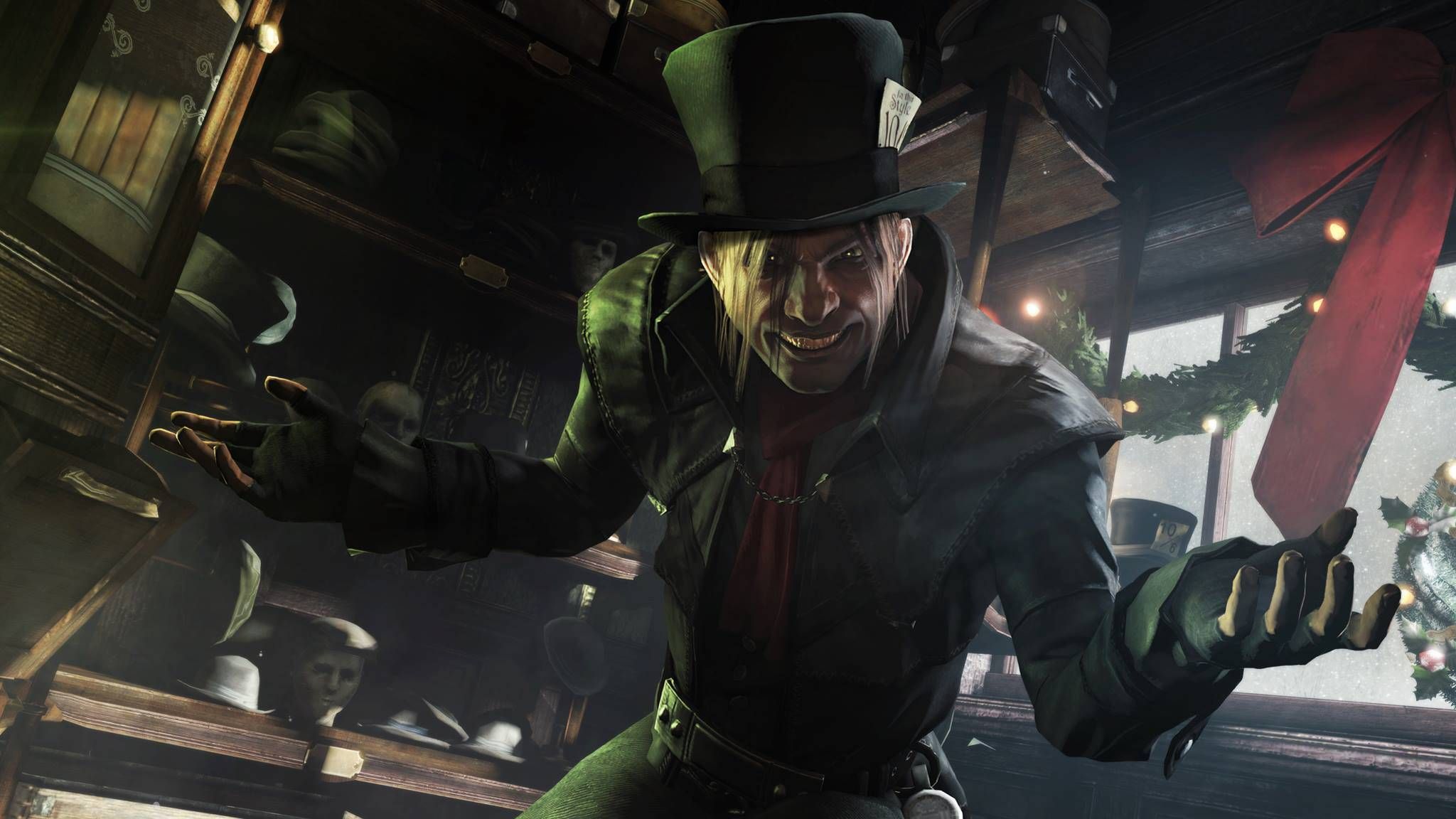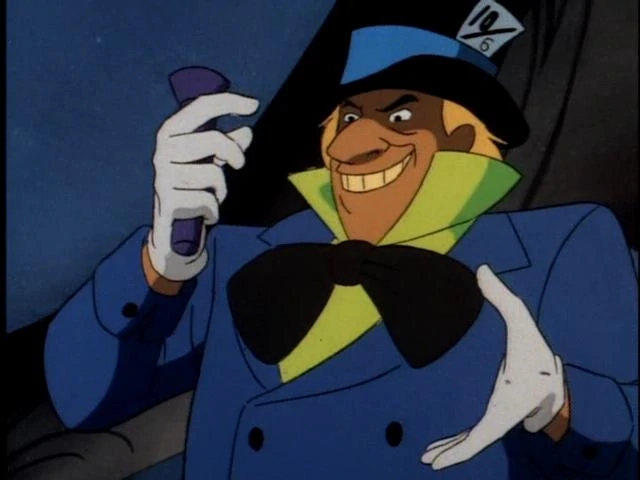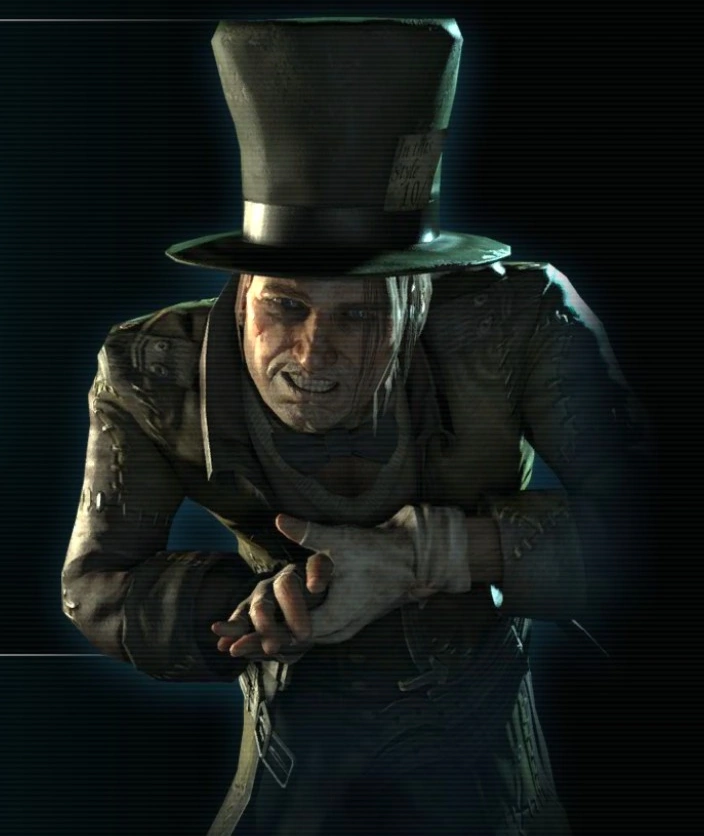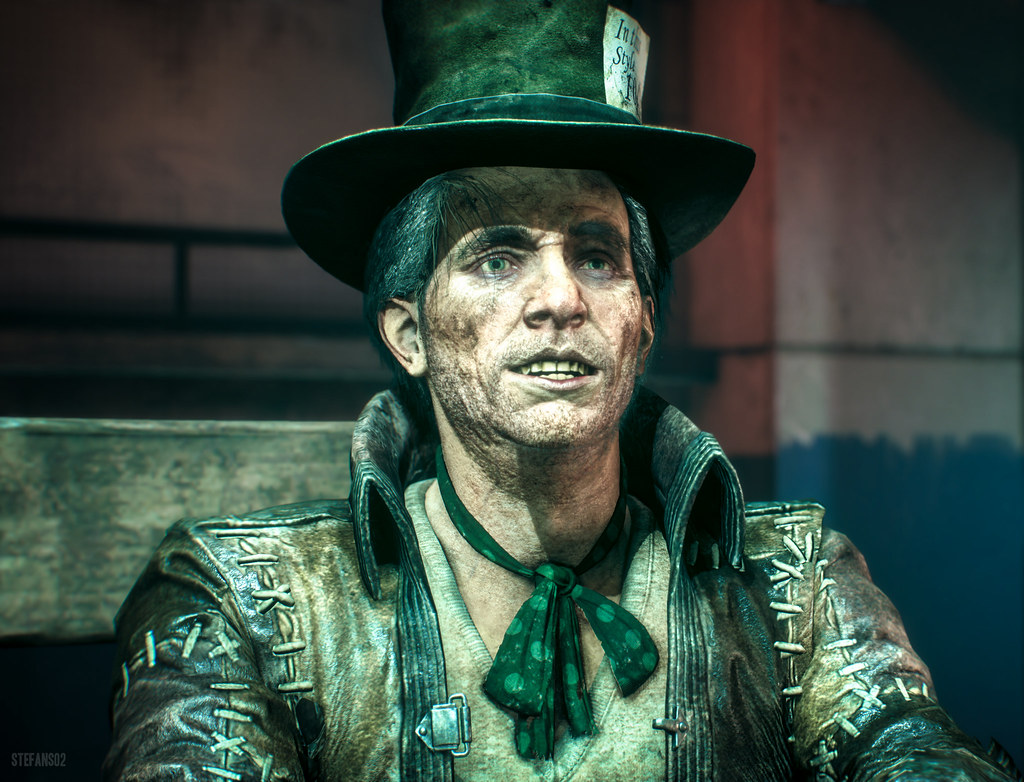As Gotham is teeming with opponents of all sorts, shapes, and sizes, the DC Universe has no shortage of unusual and demented villains, and today we will take a look at the fanciful and quite well insane Mad Hatter.
Jervis Tetch, better known as The Mad Hatter, is a DC Comics supervillain who keeps appearing as an opponent of Batman. He is based on the Hatter from Lewis Carroll’s book Alice’s Adventures in Wonderland, a character who is commonly referred to in Carroll’s adaptations as the “Mad Hatter” The Mad Hatter is described as a scientist who creates and uses advanced mind control devices to influence and alter the thinking of his victims.
He is a member of Batman’s rogue’s gallery, a group of villains who make up Batman’s most resilient enemies. The Mad Hatter has been rendered into a plethora of media, that includes feature films, comic books, television shows, and video games.
Bill Finger and Lew Sayre Schwartz developed the Mad Hatter, who first appeared in Batman #49. (October 1948). Jervis Tetch loves hats of all shapes and sizes, as well as Lewis Carroll’s children’s novel Alice’s Adventures in Wonderland and its sequel Through the Looking-Glass, particularly the chapter “A Mad Tea Party” According to Dr. Blakloch of Arkham Asylum, Jervis is obsessive-compulsive and delusional. He identifies with children rather than adults because he has an infantile self-image. Oh, and he is a genius, too.
Mad Hatter Origin Explored

Jervis Tetch, often known as the Mad Hatter, is a villain who frequently appears as a Batman foe. He’s a criminal with mind-control technology who dresses up as the character from Lewis Carroll’s Alice in Wonderland. Jervis Tetch, a brilliant neuroscientist, was obsessed with Lewis Carroll’s Alice in Wonderland from a young age and believed he was the incarnation of one of the story’s characters, the Mad Hatter. He dresses up as the Mad Hatter from Alice’s Adventures in Wonderland, as his criminal moniker suggests, and is quite literally, as mad as the hatter.
Jervis Tetch, like most of the Golden Age of Comics’ Batman villains, was a regular criminal with a colorful motif and dressing sense who was after commonwealth rather than specific trinkets.
Eight years later, in Detective Comics #230, a completely different Mad Hatter appeared: a towering, heavy-set man with blazing red hair and a striking mustache who was obsessed with stealing hats and adding Batman’s cowl to his collection. This version of the Mad Hatter, along with several other compulsive-thieving villains, was later adapted for the 1966 live-action Batman show.
His origin story in the early appearances is not very fleshed out and all we get to know is that he is a deranged neuroscientist who created electronic machinery that can manipulate the brain and cause hypnotic states, and he frequently utilizes hats or other headwear to influence his subjects’ minds.
Tech as the Mad Hatter has committed many crimes using his hypnotic skills for mesmerism, often themed around the book that inspired him and his love of hats and headgear, even going so far as to implant mind control chips in his hats, ranging from pith helmets to bowlers, to amplify his hypnosis skills. He specifically lusts after Batman’s distinctive cowl beyond all others.
Jervis Tetch is enamored with hats of all shapes and sizes, as well as Alice’s Adventures in Wonderland and its sequel Through the Looking Glass, with the chapter ‘A Mad Tea Party’ being his favorite. He has obsessive-compulsive tendencies, is highly delusional, suffers from psychotic manic depression, and is occasionally homicidal. In recent years, it has been suggested that he is a pedophile who abducts a young girl named “Alice.”
He refuses to consume anything that does not include a hat. He has delusions and thinks in ways that are typical of schizophrenia. Not only is he recognized for quoting and associating with Lewis Carroll’s Wonderland works, but he also has a hard time distinguishing between fiction and reality along with rhyming everything he says if he gets nervous or flustered in any scenario. He’ll go to any length to acquire what he wants.
Taking a look at his first few comic book appearances – The Mad Hatter attempted to take a trophy from the Gotham Yacht Club in his debut appearance but was stopped by Batman when attempting to loot spectators at a high society horse show. Tetch was then transferred to Arkham Asylum.
Later, a very different Mad Hatter appeared, claiming to be Jervis Tetch, but he was quickly exposed as a forger and dispatched as the actual Tetch reappeared. In 1981, the genuine Jervis Tetch made a cameo in Detective Comics #510. Tetch showed up with a pet monkey and a mind-erasing device. Tetch claimed to have murdered his impersonator, but the impostor reappeared in Detective Comics #573 in 1987, proving Tetch’s claim to be false.
Tetch was initially depicted with the mind-controlling devices for which he is now well known in Detective Comics #526 from 1983. He even slipped one into Scarecrow’s helmet and took control of him for a little moment. Tetch also appeared to have died under the wheels of a train – which would have been a shame, losing such an iconic Batman villain, but this was shown to be a ruse.
To commit his atrocities, Tetch frequently employs his sophisticated mind-control devices. He’s also a hypnotist and mind control expert. The Mad Hatter also has a unique understanding of hats, particularly one-of-a-kind headwear. He employs these abilities to fulfill his obsession with Alice in Wonderland. The Mad Hatter’s physical appearance has changed a lot throughout the years, but he’s always had the basic Hatter look which is quite distinct.
He was fairly short chocolate or auburn-haired man when he first appeared. He was shown as being of ordinary height and having blond hair when he returned in the early 1980s. Later in life, he was once again short, but this time with white hair. Tetch now has red hair, just like his doppelganger, although his size and height appear to be inconsistent. A slightly overlarge head and, more recently, rather large teeth are constants in his representations. Tetch claims to have macrocephaly in the most recent Secret Six #6 that dropped in December 2006.
The Mad Hatter’s Origin In Batman: The Animated Series

The best villains in Batman’s history have developed throughout time and the Mad Hatter is no exception. However, he is one of the few villains whose changes throughout time were so drastic that they necessitated the development of a new character. The ability to influence other people’s thoughts and control minds, the Mad Hatter’s most famous feature, wasn’t established until decades after his debut appearance in the comic books.
Jervis Tetch gets what could be considered his official origin tale in Batman: The Animated Series episode titled Mad As A Hatter. He was a neuroscientist who used mice to test his mind control technologies. He had feelings for a co-worker called Alice, but being a quiet and socially inept man, he was unable to tell her. When he learned that she and her boyfriend were bickering, he decided to intervene and asked her out.
To gain confidence, he dressed up as his favorite character from Alice in Wonderland and used his mind control chips to convince Alice that he was a well-known figure in town. He impressed Alice, and they had a good time on their date. When Alice’s lover Billy proposed to her, Tetch became enraged and resorted to mind control to win her over.
He lamented his decisions at one time, but he was adamant about keeping her. The Mad Hatter’s despair pushed him to become a criminal, but Batman was able to stop him and liberate Alice from mind control.
Obsession is the one characteristic that has characterized all of Mad Hatter’s incarnations. However, his obsessions have ranged from a desire to acquire remarkable and distinctive headwear to items related to Lewis Carroll’s novels, particularly Alice In Wonderland. The Mad Hatter would be the center of Jervis Tetch’s infatuation in Batman: The Animated Series, but it would be a woman named Alice who would produce the most captivating version of the Mad Hatter.
This is where it is established that Tetch also has a thing for female adolescents and ladies, seeing them as the titular Alice from the books and often kidnapping them, and some interpretations of the character suggest he’s a pedophile.
Jervis Tetch became a staple among the villains of Batman: The Animated Series after “Mad As A Hatter.” He would go on to play the primary villain in two more episodes of the series, as well as make brief appearances in two more episodes written by Paul Dini. Actor Roddy McDowall, who voiced Jervis Tetch in Batman: The Animated Series, is one reason Dini’s Mad Hatter may not have made it to the comics.
McDowall was a talented voice actor, and his portrayal of Jervis Tetch, even in the throes of his madness, hinted at the soft-spoken and frequently gentleman he once was. Another problem is that, no matter how sympathetic Tetch was, there was no excuse for the lines he broke in his quest to win Alice, and it wasn’t compelling enough to merit a major reworking of the character’s comic book narrative.
Mad Hatter In Various story arcs

As has been explored already, Mad Hatter first appeared in the Golden Age. The Mad Hatter began his criminal career by attempting to rob the members of the Gotham Yacht Club, but was prevented by Batman and Vicki Vale, and was taken to a psychiatric facility, where he resided for many years.
He later reappears in the Silver Age, utterly transformed. This Mad Hatter was proven to be an impostor, and the genuine Hatter eventually killed the impostor. Tetch grabbed Lucius Fox and held him for ransom when he returned. Jervis also intended to obliterate Lucius’ memories, but Batman intervened before he could do so.
Tetch eludes Arkham on Halloween and creates a new centre of operations at the Hill Mansion, where the twin Hill brothers brought children to be abused and killed. He gathered the children for his Wonderland tea party and offered them drugged tea to make them submit to his demands. Batman, on the other hand, thwarted his schemes once more.
After the Crisis on Infinite Earths, not much of Mad Hatter’s Golden and Silver Age history was altered. Tetch’s next deviant plot involved giving away free CD players to young blonde girls from Dick Grayson’s elementary school, which were pre-programmed with subliminal messages. Tetch planned to sell the enthralled young girls to Generalissimo Lee, a third-world despot, and another notorious pedophile. However, he was captured, and it appeared that the Mad Hatter had been murdered when a train ran over him; however, it was later found that the death had been staged.
Mad Hatter was ultimately given a comic book origin after the events of Flashpoint. Tetch’s obsession with hats began when Jervis’ father was a hatter. Tetch used to be quite popular, and he and his crush, Alice, were close friends. He once took her to an Alice in Wonderland theme park, a memory he would always treasure and which will influence his future life. Tetch, on the other hand, grew little in stature as he grew older due to a lack of testosterone, and was thus rejected by Alice.
To reclaim Alice’s affection, Tetch began taking medications that were supposed to make him taller but instead made him insane, completing his transition into the Mad Hatter. Again, a different origin story from the one in the animated series but stay with us here. All the stories chronicle his descent into insanity and have the same running theme of scorned genius, giving them a common ground.
In the story arc The Unknowing, he caused absolute chaos by controlling the minds of many in Gotham including Sasha Bordeaux who was Wayne’s bodyguard and also extremely close to him. However, Bruce was able to break the Hatter’s trance by speaking to Sasha and conveying his raw emotions because he refused to fight someone he loved so much.
When the Mad Hatter attempted to flee Arkham with a guard under his command in the Alone at Night arc, they were both caught in the crossfire by the cops. Hatter was shot several times and was in serious condition. He appeared to be dead at first but later emerged as a collaborator with the Black Mask. He implanted a mind controller in Killer Croc while dealing with Black Mask, which caused him to mutate even more as a result of what Hush and Riddler did to him.
The Mad Hatter is also at one point held guilty for a significant hostage bombing crisis in the Unresolved story arc because he had commanded the bomber via his mind-control technology, demonstrating that he can plan sophisticated crimes even from behind bars.
The Mad Hatter then joined the Secret Society of Super-Villains during the Infinite Crisis and fought the heroes in the Battle of Metropolis. One year after the events of the Infinite Crisis, the Mad Hatter collaborated with The Great White Shark to frame Harvey Dent for the murders of all of Gotham’s villains. When Robin and Captain Boomerang II, Owen Mercer, went looking for his atomic weapon, his hideout was destroyed when he imprisoned Robin and his friends inside.
Catman afterward approached the Mad Hatter and invited him to join the Secret Six. He agrees, and his mission was to assist them in fending off Doctor Psycho’s mind control talents. Later, the Secret Six were ambushed by Ragdoll, who was controlled by Dr. Psycho, and he had to put on his “thinking cap.”
Putting on the cap, however, caused him to have a seizure. Doom Patrol assaulted the Six later, and they were nearly beaten until the Mad Hatter intervened and utilized his mind control talents to stop the Doom Patrol. The Secret Six tell Vandal Savage that they are his friends after defeating him and destroying his base, which makes Hatter very pleased. Ragdoll then pushes the Mad Hatter from the building, causing him to fall to his death. The Mad Hatter was later found to have survived the fall and vowed vengeance on the Secret Six.
Turpin discovers in Final Crisis that the Hatter was vital in assisting Darkseid in bringing the children together, through the use of his mind-control hats. Turpin, overtaken by a terrible passion he doesn’t comprehend, brutally hits the Hatter, causing a lot of tooth and blood loss. The Hatter admits that the youngsters have been brought to Bludhaven after being threatened with brain damage. Darkseid’s Justifiers helmets are a blend of Apokoliptic technology and the Hatter’s mind control circuitry, according to the Final Crisis Secret Files.
In his final major story arc, in order to assassinate the Secret Six, the Mad Hatter set up a chain of events involving Ragdoll’s sister Junior, but he was destroyed after Ragdoll used one of his hats to induce him to leap over a bridge into the water. Tetch, as it turns out, survived his fall and returned to work for the Penguin in order to deal with the new Black Mask and the Falcone crime family’s return. Tetch, on the other hand, was returned to Arkham. Tetch later plans a big prison uprising and employs Deathstroke to help him to escape Arkham.
Terrifying Versions Of Mad Hatter In Various Forms Of Media

Actor David Wayne portrayed The Mad Hatter, in the 1960 television series Batman. He was modelled on the Mad Hatter from the comic books of the time, who had not yet been exposed as a fraud. His main weapon was a trick top hat with a set of eyeballs hidden within that would spring up and blast a hypnotic beam at his opponent.
Lisa, a female associate who worked at a hat shop, was his accomplice. She assisted Tetch in kidnapping her boss, who was one of the jurors who had assisted in his incarceration, as well as the remainder of his efforts to foil Batman and Robin plans.
The Mad Hatter appears as both a boss and a playable character in the Lego-based game Lego Batman: The Video Game. In his villain level, he joins up with the Joker. He has the ability to manipulate people’s thoughts, wield a weapon, and double jump. He also appears in a number of other video games.
In the video game Batman: Arkham City, he appears as a villain in a side quest. Hatter also appears in Batman: Arkham Knight’s Season of Infamy DLC, where he has kidnapped a number of cops and is teasing Batman with their locations from a GCPD interrogation chamber. Finally, in the online MMORPG DC Universe Online, the Mad Hatter is seen as a villain.
With that, we come to the end of the origin story of The Mad Hatter, a famous yet obscure DC villain and mind controller. He genuinely gives us the creeps though, what do you think? Let us know in the comments section below!
